We occasionally link to goods offered by vendors to help the reader find relevant products. Some of these may be affiliate based, meaning we earn small commissions (at no additional cost to you) if items are purchased. Here is more about what we do.
Whole grains are all the rage, and with good reason! They’re packed with both flavor and nutrition.
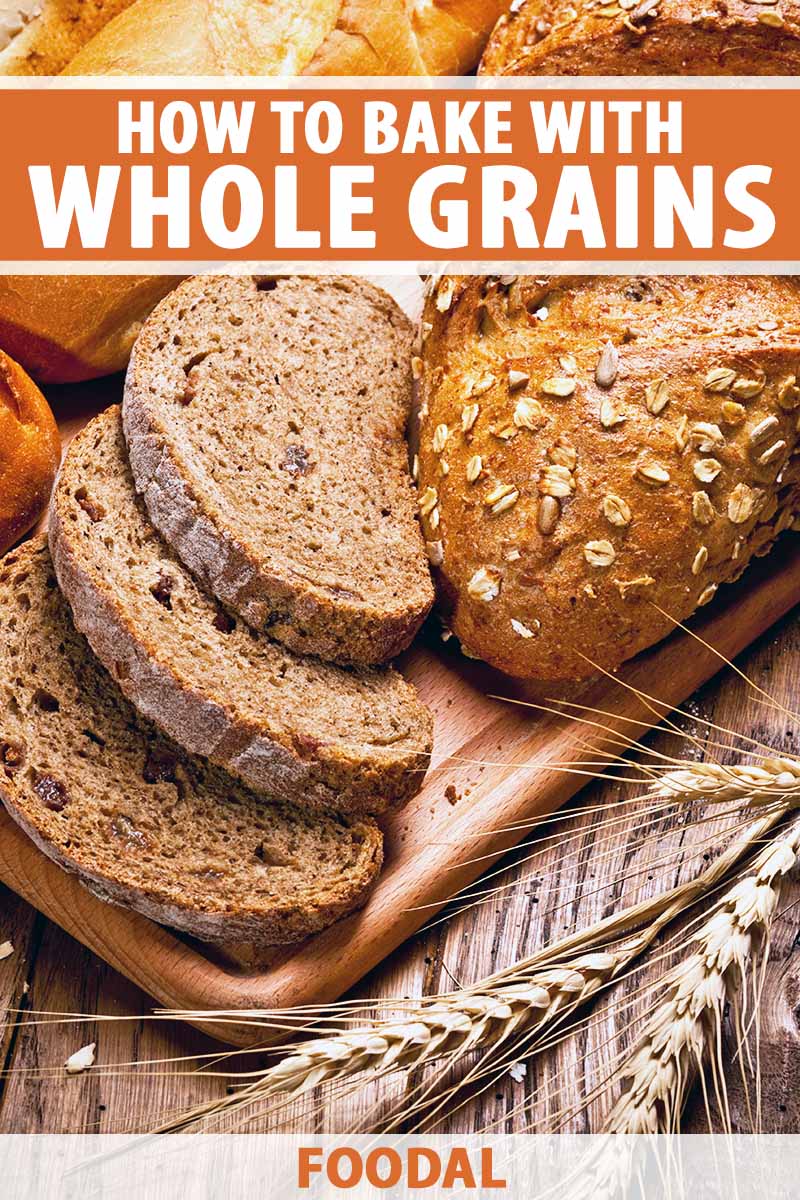
But baking with them can be a bit tough, and I mean that in multiple senses of the word.
When used improperly and without much consideration for the ingredients on hand, baking with whole grain flours can lead to dense or dry results.
Fortunately, there are a few different ways that you can work these grains into your diet without compromising on texture, and you can greatly improve flavor.
Striking the right balance of more refined products and whole grain varieties is the key to making baked goods that reach their full potential in terms of flavor, texture, and nutritional content.
Continue reading to learn more about whole grains, and how to best incorporate them when you are in the kitchen!
How to Bake with Whole Grains at Home
Get to Know the Germ and Bran
With most types of white refined flour that are ground from wheat, the endosperm – the portion containing starch and protein – is separated from the germ and the bran, which are primarily fat and fiber.
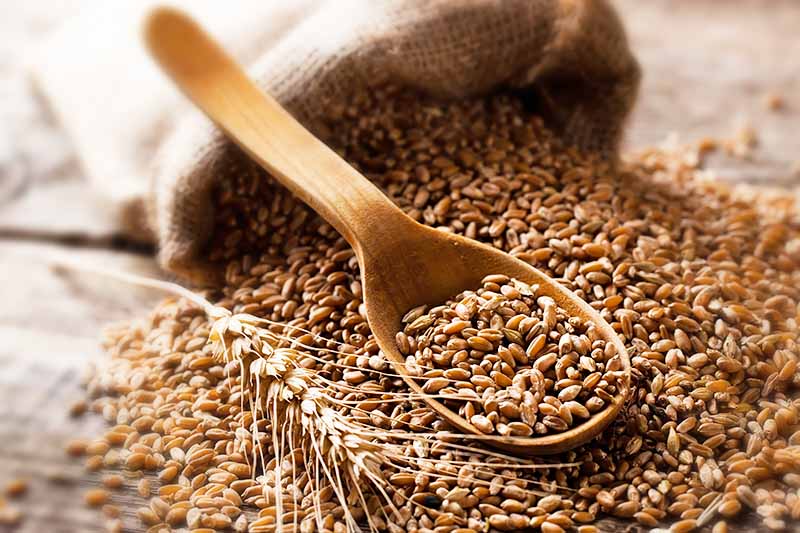
The germ and the bran are removed in order to leave a finished product that is fine in texture and light in color.
“All-purpose flour” is a general term for a commerically available milled product that does not include the germ or bran and only includes the endosperm.
But in whole grain styles, the germ and bran remain intact, providing flavor and a huge host of nutritional benefits.
In some of our diets, consuming more refined white types of products has gained a bad reputation – its lack of dense nutritional value has led to its notorious status.
And that’s really unfortunate – refined white flour is an essential ingredient in traditional baking, especially when you want to incorporate healthier and heartier grains with the best results.
To illustrate, let’s consider wheat for a moment as if it were an egg.
The endosperm is like the egg white, composed of structural protein – but technically speaking, let’s not overlook that the endosperm contains both protein and carbohydrates.
The germ is like the yolk, and it contains fat, flavor, and so many nutrients. Finally, the bran is like the shell, and it’s made of fiber.
If you were to eat both egg white and egg yolk, you’d get the most bang for your buck as far as nutrients and flavor are concerned.
But try adding a bit of yolk into your next meringue and you’ll realize how necessary the separation of the white can be! Just that little bit of extra fat will prohibit the proteins from developing any strength at all.
Cooking with all-purpose white flour is similar to cooking with an egg white. The endosperm doesn’t have as much flavor as the germ or bran, but it lends a significantly important structural role.
In many recipes, the protein just can’t do its job if too much fiber or fat get in the way.
More than likely, we have all bought and used an all-purpose variety for our cakes, cookies, brownies, and more for years. You’re already an expert on that!
But if you need a little more schooling on whole grains, let’s go over specific classifications of wheat and types of whole grain flour next, and how they need to be treated in recipes.
Learn About Wheat Classifications
Wheat is generally classified according to three main considerations: its growing season, color, and hardness level.
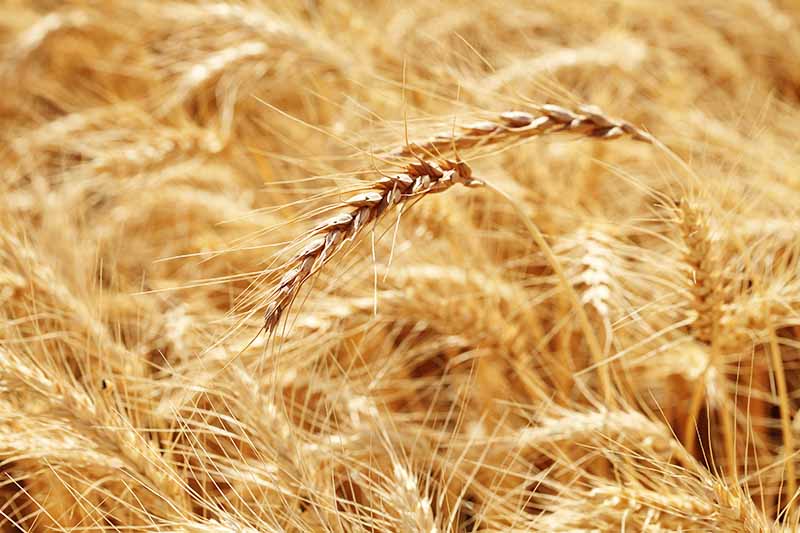
The main classes grown in North America that are all milled into flour and typically used for baking include:
- Hard red winter
- Hard red spring
- Hard white
- Soft red winter
- Soft white
Winter wheat is sown in the fall and harvested in the spring, and is typically grown where winters are mild. Spring wheat is sown in the spring and harvested in the summer.
As for the color, different strains of wheat will produce bran in different colors. Red and white colors are the most common varieties.
When referring to the “hardness” or “softness” of wheat, this is an indication of protein content.
Harder kernels will have a higher protein content, and will yield a stronger milled ingredient with more protein.
More protein will create a stronger gluten network. However, in the specific case of whole wheat flours made with harder wheat kernels, the bran actually cuts into the gluten network, resulting in a denser dough.
Softer kernels will have a lower protein content, and will yield a weaker flour with less protein. Softer flour is better for baking products that need a tender texture, like cakes and scones.
Both whole wheat and all-purpose milled products can potentially be made with any of these varieties of wheat to produce a flour with a certain protein content and level of coarseness.
All-purpose can be made with a blend of both hard and soft varieties to yield its “all-purpose” baking quality. Remember, this particular product is milled to remove the bran and germ.
Understand the Different Types of Flour
Various grains and flour blends will behave differently in your recipe, so it is important to know how to navigate and select from the many types that are available.
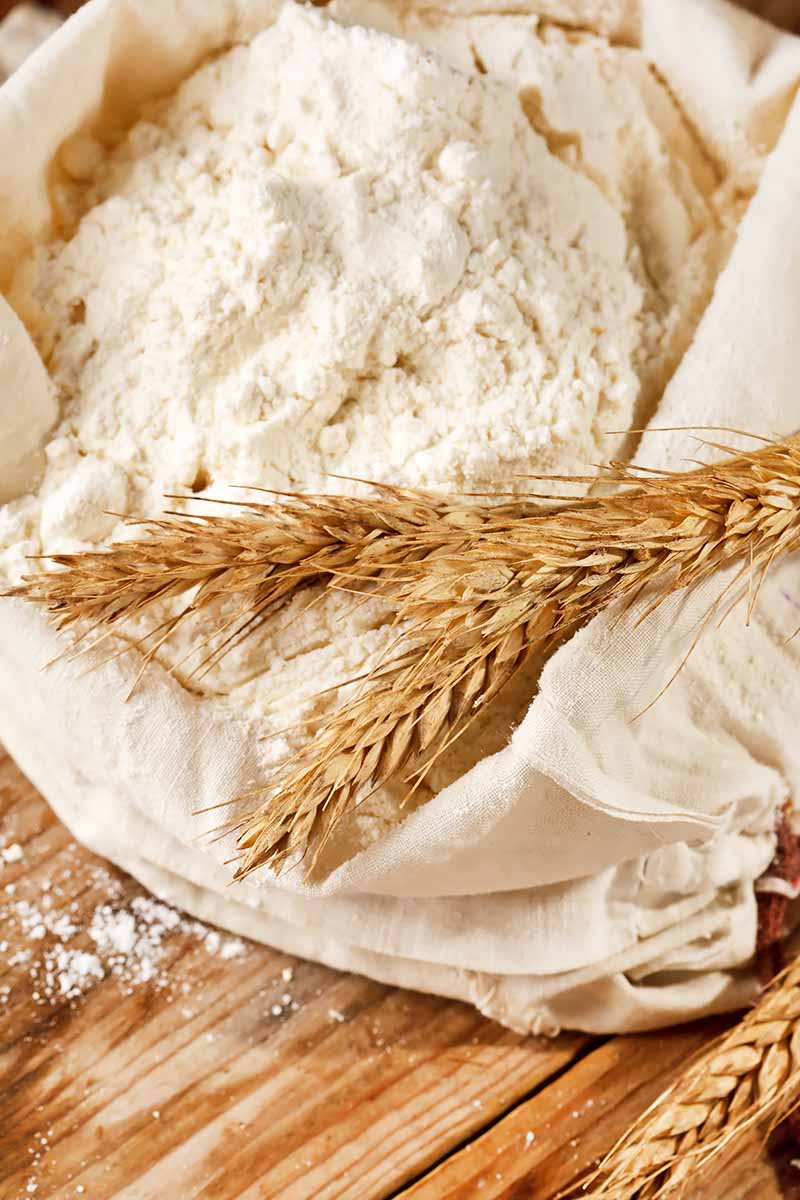
Our guide to types of flour can help you learn the basics of the most common options available, but let’s focus specifically on some popular whole grain varieties here!
Whole Wheat
Flour that is 100% whole wheat will give you all the nutritional benefits of the composition of an entire grain, as well as a rich and hearty flavor.
Ground from hard red spring or winter wheat berries, this type of nutritious product needs some special attention when baking.
More liquid must be added to the recipe to keep it from yielding a dry, dense product. This type absorbs more water than refined all-purpose, so you will need to add more liquid to your dough or batter to yield the right consistency.
When searching for recipes, especially when you have just started your journey with whole grain baking, it’s a smart strategy to find recipes that combine a harder whole wheat style with a softer style – like all-purpose – to create a more manageable dough and better texture in the finished product.
100% Whole Grain Whole Wheat Flour, available from King Arthur Baking Company
You’ll love using King Arthur Baking Company’s 100% Whole Grain Flour in your recipes, milled from hard red wheat berries.
Whole Wheat Pastry
If you are making cakes or scones, two styles of baked goods with a very tender texture, use a whole wheat pastry flour.
Milled from soft white wheat, it contains less protein and will not result in a finished product that’s as dense as a traditional whole wheat flour made with hard red wheat berries.
This specific style is also typically milled more finely compared to other milled options.
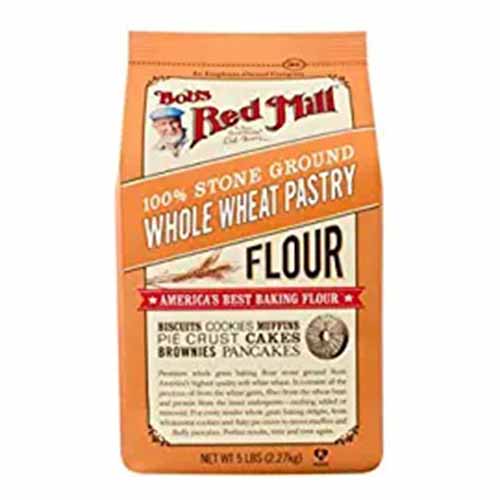
Bob’s Red Mill 100% Stone Ground Whole Wheat Pastry Flour, 4 pack of 5-pound bags, available on Amazon
Bob’s Red Mill makes a 100% Stone Ground Whole Wheat Pastry Flour, which is currently available on Amazon in a pack of 4 5-pound bags.
White Whole Wheat
When baking bread, something that requires gluten development for a stronger structure and chewier texture, you will need to seriously consider the type of flour you will be using.
White whole wheat – ground from hard white berries rather than the hard red variety – will produce results closer to that of all-purpose or bread.
Compared to whole wheat pastry flour, this particular style of product typically milled more coarsely.
Stone-Ground White Whole Wheat Flour, 5 pounds, available from King Arthur Baking Company
Stone-Ground White Whole Wheat Flour is available in a 5-pound bag from King Arthur Baking Company. Or, choose their organic version.
Spelt and Einkorn
Spelt flour will also give you similar results to white whole wheat. With its sweeter and nuttier flavor, this ancient wheat variety can make a tasty addition in classic baked goods.
Consider purchasing this Organic Spelt Flour from Arrowhead Mills, available on Amazon.
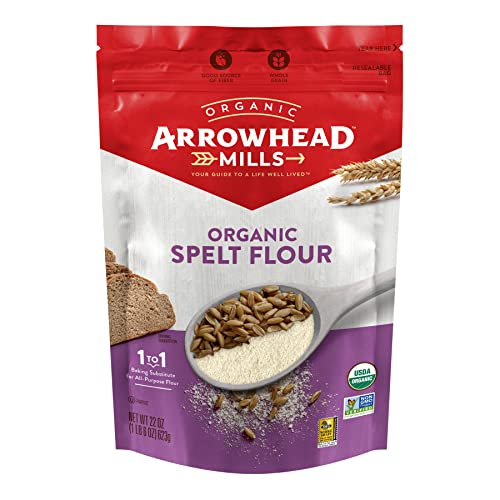
Arrowhead Mills Organic Spelt Flour, 22 ounces, available on Amazon
Einkorn is another ancient wheat variety that behaves differently when used in doughs and batters compared to an all-purpose option.
While einkorn flour does contain gluten, it will be stickier and less pliable compared to the gluten network created by other varieties. Einkorn also absorbs liquid more slowly than other kinds of flours, so you should not use as much liquid in your recipe.
If you’re playing around with cookies or quick breads, whole wheat pastry, white whole wheat, and spelt are all great options. They will add excellent flavor without creating a product that is too dense to enjoy.
Rye
Rye flour is an incredibly delicious option, but it also requires more attention when you want to use it in recipes.
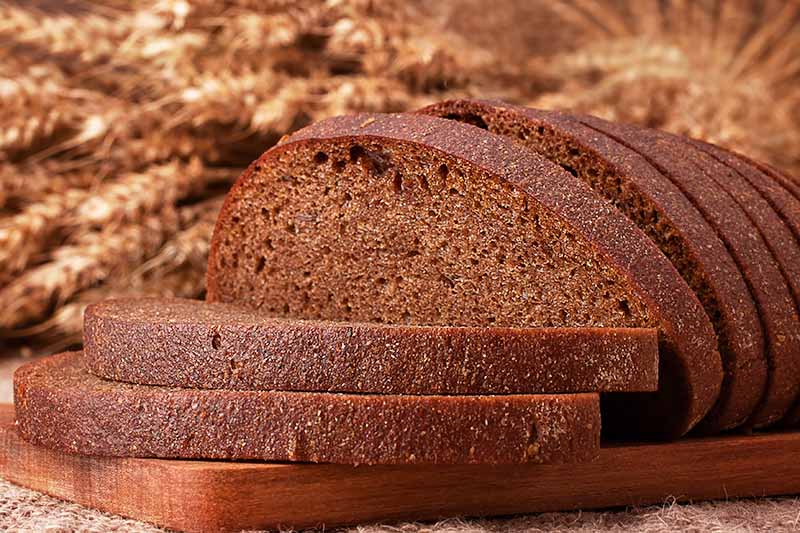
Rye is available to purchase in a few different grades and classes, most commonly as light/white, medium, and dark, depending on what part of the rye berry is milled. Meal is also available, which is milled using the entire berry in varying levels of coarseness.
Because doughs made with this type will not produce a strong gluten network, any product made with 100% rye flour will be very heavy and dense.
Its high pentosan gum content is also a cause for concern when baking. Rye has nearly four times the amount of pentosan gums as regular all-purpose flour.
While the gums give some structure, they interfere with gluten development, causing doughs to be sticky and difficult to handle. Pentosan gums also absorb a large amount of liquid.
Another common characteristic of this type is that it contains higher amounts of the enzyme amylase than wheat. Amylases break down and convert starches into sugar, which the yeast feed on, catapulting the fermentation process. An excessive and overactive rate of fermentation can also impede the final structure of bread.
To compensate for all of these potential issues, rye needs to be combined with more liquid in a recipe, and should be mixed with an acidic ingredient to slow down the amylase.
Enzymes such as amylase weaken in acidic environments. By including a certain amount of acid in your recipe, the amylase will be better harnessed and controlled.
To dip your toes into the realm of rye, consider using a rye flour blend in your baked goods. A blend combines rye flour with other varieties that are milder in flavor and texturally more manageable to work and bake with, most often all-purpose flour.
Rye Flour Blend, 3 pounds, available from King Arthur Baking Company
King Arthur Baking Company sells a Rye Flour Blend that combines white and medium rye flours with pumpernickel and unbleached all-purpose flour.
You can use it as is to make a classic rye bread, or you can use a 50/50 mix of this blend with all-purpose or bread flour for a milder taste.
Buy and Store Them Carefully
The most important step in baking with whole grains is ensuring that you have fresh, high-quality flour available.

Because it contains the oils from the germ, it can go rancid much more quickly than a bag of refined white.
Make sure to purchase yours from a store that has a high turnover rate, and always check the sell-by dates before buying!
Once you’ve opened the bag, store it in an airtight container in the refrigerator or freezer. This will help to extend its shelf life. When it’s chilled, it will last for 3 to 6 months.
Of course, for the freshest and tastiest option, you could also look for a local miller, preferably one who makes a stone ground product.
My favorite kinds come from a local farm that mills their own wheat, and delivers their products around the state twice per week. It doesn’t get much fresher than that!
Though you could easily grind your favorite grains right at home! And don’t forget to read our complete guide to countertop grain mills to make the best selection for your specific needs and requirements.
This will require more labor on your part, but it can be well worth the effort if you want to make the most delicious baked goods with the freshest ingredients.
Only Substitute a Portion
Once you’ve chosen the appropriate variety for your recipe, or the one that you are most interested in using, it’s important to have the best ratio in mind to achieve a tasty and satisfying final product.
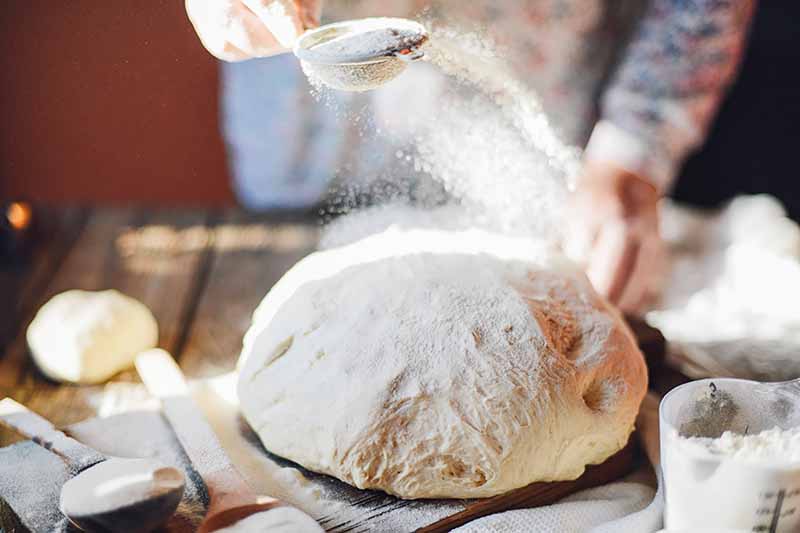
And I don’t recommend a 1-to-1 substitution for these styles.
The concentrated starch and protein found in white flour is necessary for a light and well-structured loaf of bread, cake, cookie, or scone.
Substituting a whole grain variety for all of the regular refined flour will almost always leave you with something resembling a brick – heavy, dense, dry, and not that enjoyable!
Instead, when making cakes, cookies, scones, and quick breads, try substituting 30 to 40% of the all-purpose flour with your whole grain alternative. This will bump up the flavor and nutrition without harming the texture.
When making artisan breads that require allowing the yeast to rise and proper kneading, you can increase this quantity just a little more. Using 50% whole grain to 50% bread flour will work just fine to ensure that you have developed enough gluten.
Don’t hesitate to add an extra tablespoon of water at a time if your dough feels quite dry when you are halfway through kneading.
Let the Dough Rest
Once you’ve mixed your dough or batter, one last way to ensure a good end result is to let it rest for a little while.
Waiting 10 to 20 minutes will create a noticeable difference, but if you can, try leaving it in the fridge overnight before you proceed with the recipe.
The moisture will soften the germ and the bran, creating a much nicer texture.
Use the Right Recipes
A safe and smart decision to make when you are new to whole grain baking, or any unfamiliar recipe for that matter, is to rely on tested recipes published by food professionals rather than attempting to make your own substitutions.
And we’re here to help you!
We’ve broken down our favorite hearty and healthy recipes into some basic categories – you’ll find a fun collection of really tasty options right here:
Sourdough Bread
My favorite way to incorporate heartier grains into baking is with sourdough bread.
The long fermentation process breaks down the fiber that makes grains difficult to work with in other baking applications. Plus, it really develops the nuances of flavor present in the different kinds of milled wheat products you are using.
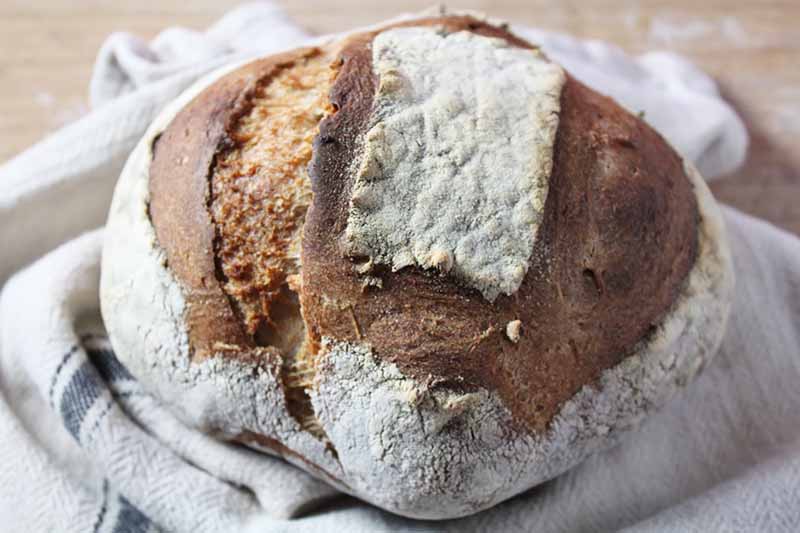
Homemade Sourdough Bread: Get the Recipe Now
Because of this long microbial fermentation, fermented sourdough can handle a much higher ratio of whole grains than other baked goods.
I know some bakers who will make theirs with 100% whole grain, though I’ll admit this is a bit too dense for me. About 66% is the maximum that I enjoy.
To give my recipe a try with this recommended percentage, follow the instructions in my guide to sourdough. But instead of using 100 grams of whole wheat and 200 grams of all-purpose flour, reverse these amounts. Try 200 grams of a whole grain flour with 100 grams of white all-purpose.
Other Breads
If you are looking for easier-to-craft breads that don’t require as much of a commitment as sourdough, there are many options for you.
Whether you knead by hand for a workout, or enlist the help of your stand mixer, you’ll have fun making these recipes for fresh bread featuring bountiful ingredients:
- Dark Rye Bread
- Whole Grain Bread with Oats and Seeds
- Maple Oat Bread
- Soaked Whole Grain Bread
- Homemade Pecan Bread with Dried Blueberries
With a little preparation and planning, you can serve a freshly baked loaf of bread for your next homemade dinner.
And you can potentially use any leftovers to make our sweet and tasty bread pudding with fruits and nuts!
Muffins
Simple to mix, assemble, and bake, muffins are easy for beginner bakers. Save these recipes if you’re searching for a healthier start to days when you’re on the go:
- Cardamom Pistachio Muffins
- Healthier Oatmeal Chocolate Chip Muffins
- Sprouted Wheat Coconut Cocoa Banana Muffins
- Vegan 100% Whole Wheat Blueberry Banana Muffins
Muffins are also freezer-friendly, so double up for bigger batches if you want to meal prep!
Desserts
We love a sweet ending to a meal, especially when dessert can be juuuuust a teensy bit wholesome and healthier!
If you need some ideas for the final course, we have a few suggestions for you:
- All-Butter Spelt Pie Crust
- Cookies ‘n’ Cream Spelt Cookies
- Vegan Spelt Walnut Dark Chocolate Chip Cookies
- Whole Grain Chocolate Cake
Use the spelt pie crust as a perfect buttery base for your favorite pie filling – like juicy blueberries and chocolate silk.
Healthy Baking Can Taste Delicious!
Whenever I hear of a baked good that’s described as tasting “healthy,” I cringe.
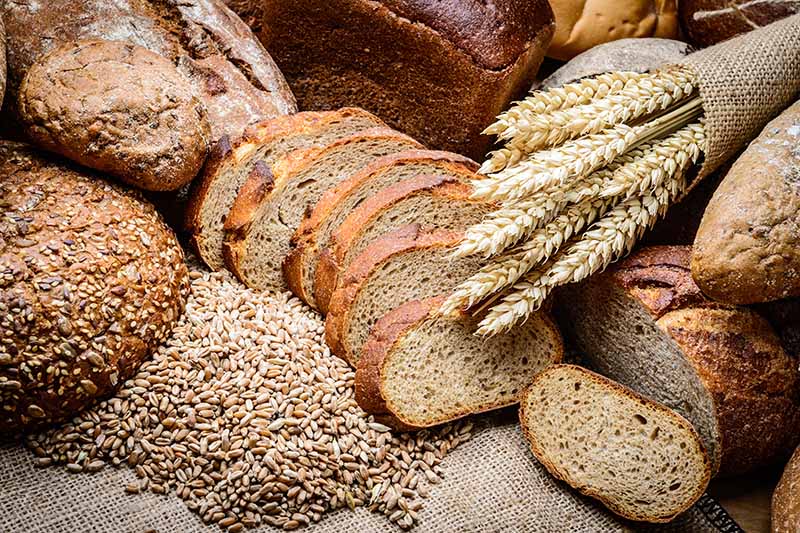
It has become far too commonplace to assume that “healthy” food is going to be dense and dry, with no flavor and no pleasing texture.
Hopefully the techniques and tips for whole grain baking described here will change your mind!
Your baked goods can be light, tasty, and enjoyed without guilt. Don’t make yourself choose between healthy and delicious – with our help, you really can have both.
Try out any of our recommended recipes, and continue growing your personal baking repertoire. No one will be upset to have a steady supply of freshly made cakes, cookies, pies, breads, and more.
How do you like to incorporate any of these healthy and hearty ingredients into your baking at home? Let us know in the comments below, and feel free to ask any more questions that were not covered here!
Are you determined to gain more experience baking in your home kitchen? Learn from the best! We have more tips and tricks to help you grow your baking knowledge and develop your skills. To start, review these articles next:
- How to Use Pie Weights for the Perfect Crust
- Tips for Baking at High Elevations
- 10 Tips to Bake Perfect Cookies Every Time
Photo by Kendall Vanderslice, © Ask the Experts, LLC. ALL RIGHTS RESERVED. See our TOS for more details. Originally published on February 15, 2017. Last updated on April 18, 2023. With additional writing and editing by Nikki Cervone.
About Kendall Vanderslice
Kendall’s love of food has taken her around the world. From baking muffins on a ship in West Africa and milking cows with Tanzanian Maasai, to hunting down the finest apfelstrudel in Austria, she continually seeks to understand the global impact of food. Kendall holds a BA in Anthropology from Wheaton College and an MLA in Gastronomy from Boston University, and has worked in the pastry departments of many of Boston’s top kitchens. Based in Somerville, Massachusetts, Kendall helps to run a small community supported bread bakery and writes about the intersection of food, faith, and culture on her personal blog, A Vanderslice of the Sweet Life.

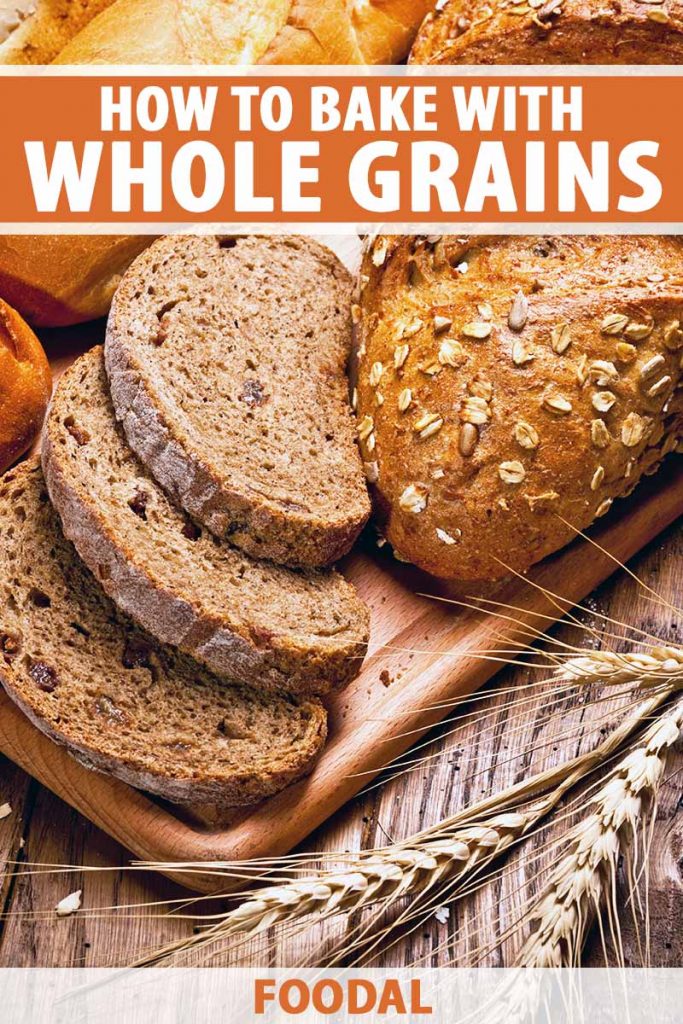

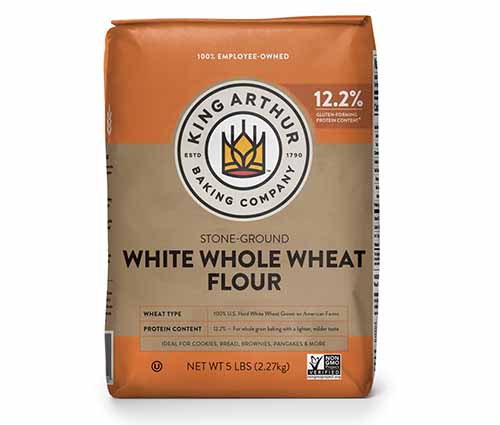
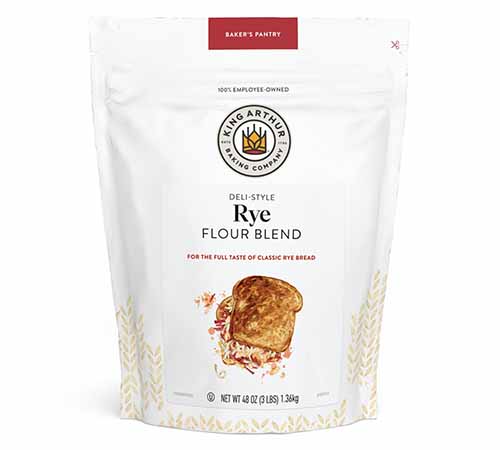

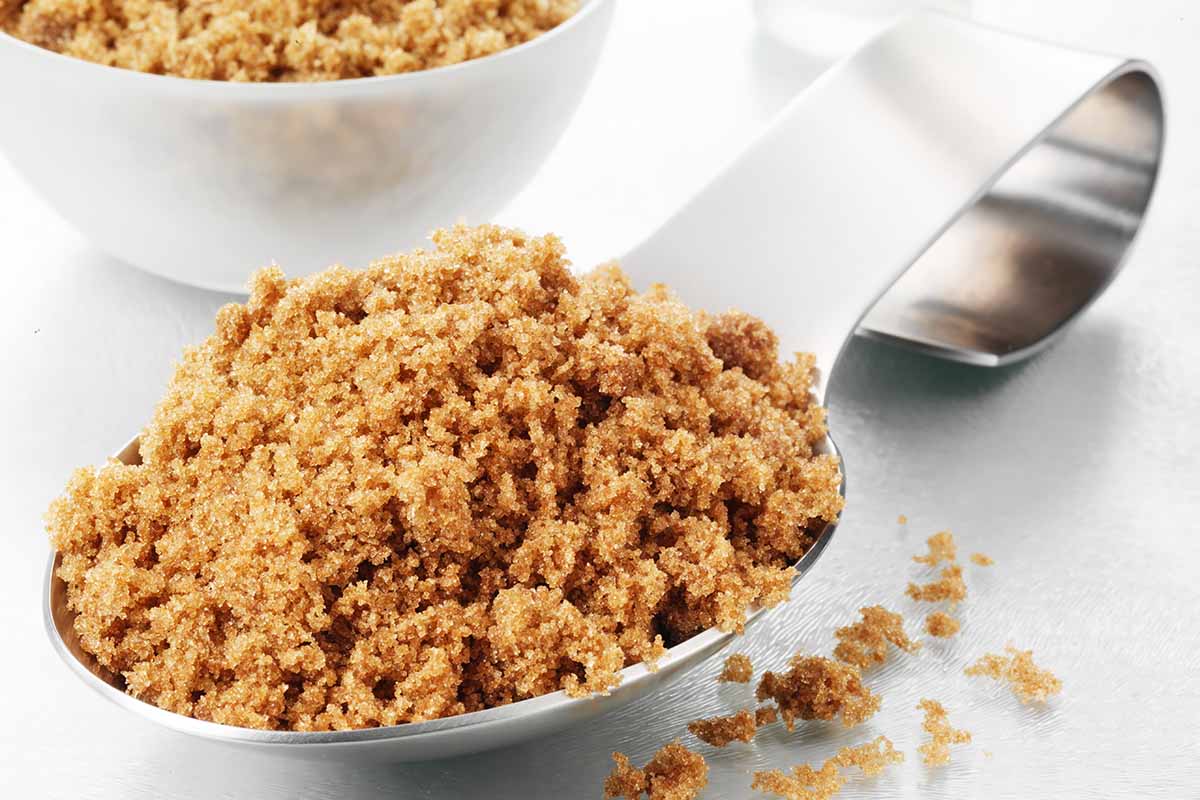
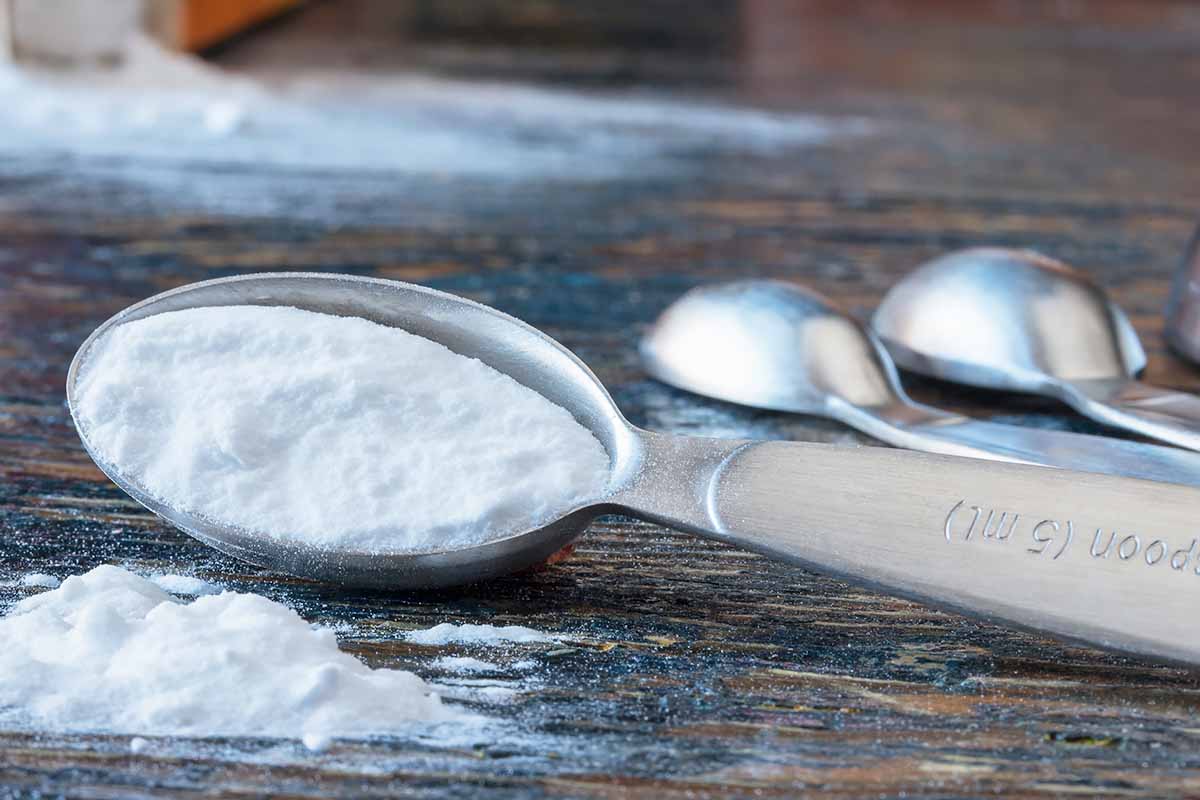
Hey! Thanks for sharing. I will surely try this out.
Can you substitute the Spelt flour with another flour?